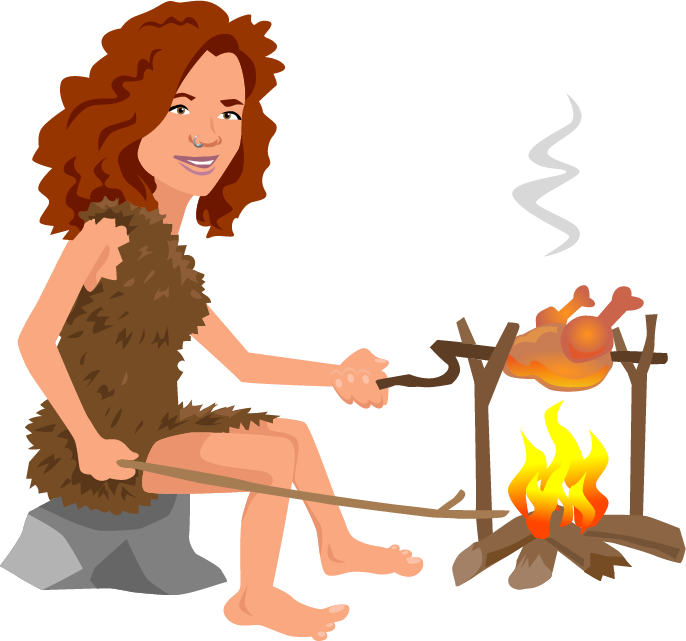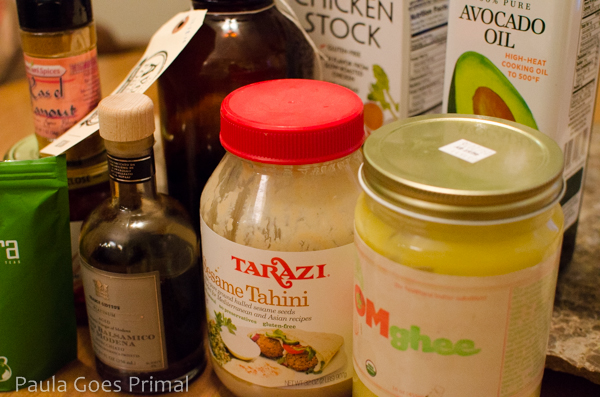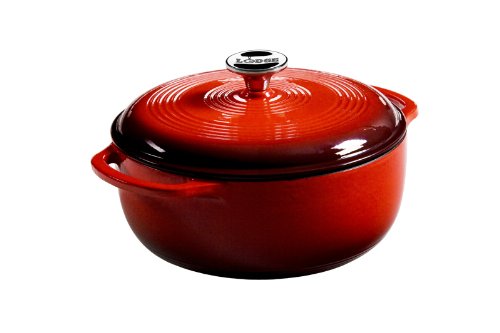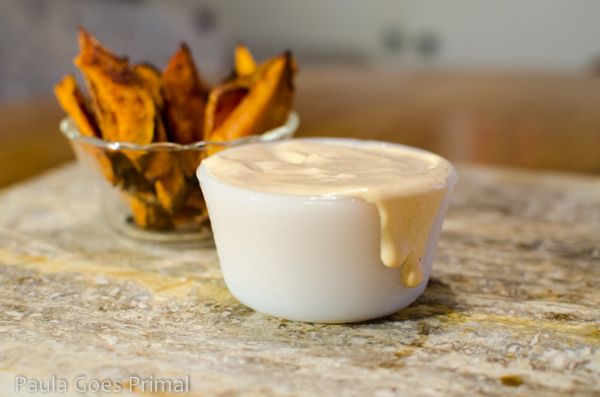I’ll be throwing around some of these terms here on the Paula Goes Primal Blog, so I should probably explain for those of you who may be new to this way of living, need a refresher course, or are just curious! To learn more about the Whole30 Program, visit the official Whole30 website.
What is Paleo?
I will start with Paleo because it is probably the most widely known of the three terms here. The Paleo Diet was started by a man named Loren Cordain several years ago. The premise behind the diet, taken from the Paleo Diet website, is this:
“The Paleo Diet is based upon everyday, modern foods that mimic the food groups of our pre-agricultural, hunter-gatherer ancestors.”
So, simply put, eat like cavemen. It’s easy to grasp and it’s backed up by scientific claims and tons of people who have had great success eating this way.
Essentially, you eat more protein, fiber, and fat, and eat fewer carbs. Grains are a no-no, but meat, eggs, veggies, fruit, nuts, and healthy oils are a go! I don’t want to go into too much detail, but if you want to learn more about the Paleo Diet, you can read this short guide to Paleo friendly foods on the Paleo Diet website.
What is Primal?
The word “primal” is often associated with the Paleo Diet, and sometimes, when people say primal they mean Paleo. However, there is a separate “diet” or “lifestyle” (whichever you prefer) called the Primal Blueprint, founded by Mark Sisson. While the basic premise is the same, there are a few differences.
On the website Mark’s Daily Apple, Sisson explains that the “fundamental difference” between the Paleo Diet and the Primal Blueprint “is the role of saturated fats.” Sisson believes foods like butter, coconut oil, and eggs, which are traditionally thought to cause high cholesterol and heart disease, should not be limited, and are in fact essential for many physiological processes.
I’ll stop there since I don’t want to get too heavy into the science-y stuff (not my department), but if you want to learn more about the Primal Blueprint, go to Mark’s Daily Apple for tons of info and great resources.
What is Whole30?
Finally it’s time to talk about Whole30! This is my favorite part because this is essentially how I got started. I go into more detail about that in a separate post called “What Whole30 Has Done For Me.”
So, what is Whole30?? Well, it’s not so easy to describe in a few sentences, but I’ll tell you what I tell most people when they ask. Whole30 is not really a diet, it’s a way to develop a healthy relationship with food. For 30 days you commit to cutting out all grains, sugar, artificial sweeteners, alcohol, legumes, dairy, MSG, sulfites, and carageenan. Does that sound scary yet? This is where most people go, “wait a minute…that’s too extreme for me!”
It shouldn’t be! Because more importantly than all of that, for 30 days you’re committing TO EAT a ton of amazing food. Grass fed beef, farm fresh eggs, organic vegetables and fruit, coconut oil, ghee, olives, and so much more. My mouth is watering just writing this! I’ve only listed a few of my favorite things to eat while doing Whole30, but you can read the Whole30 Program Rules for a more in-depth description.
What do you do when the 30 days are over? Many people keep going! But if you don’t want to do that, you can slowly start adding food back in. The Whole30 Program was designed to give you the opportunity to listen to your body and discover what your ideal “diet” (in this case, it just means “what you eat”) will be.
So what do all these terms mean on the Paula Goes Primal Blog?
I’m going to be honest with you, I haven’t read the entire Primal Blueprint, nor do I strictly follow the Paleo Diet. I chose the name “Paula Goes Primal” for this blog because of the general sentiment of the word “primal” and my desire to follow a similar diet as our hunter-gatherer ancestors.
With that said, Whole30 has helped me discover which foods my body responds best to, and which ones I probably shouldn’t eat. Everyone is different, and I encourage you to discover that for yourself rather than blindly adhering to some arbitrary diet plan.
Most of the recipes on this blog will be Whole30 recipes, which means, in many cases they’ll be interchangeable with both Paleo and Primal lifestyles. I’m fairly certain that all Whole30 recipes will be Primal-friendly. However, ghee (clarified butter) and white potatoes are not allowed on the Paleo Diet, so in order for many of my recipes to be Paleo-friendly, some substitutions may be necessary.
In most cases, I will provide substitution options. For example, you can pretty much always substitute a sweet potato or yam for a white potato and coconut oil for ghee. Pretty simple. Use your judgement!













I like Whole 30 and this Blog. Stomach aches last two days. Chilli spice and or too many nuts I think cause. Became discouraged as scale has only dropped 5 lbs in 6 weeks. Husband encourager. Need this blog for new recipes.
I had a similar problem with stomach aches during my second Whole30 and realized it was too many macadamia nuts! As soon as I started limiting them, my stomach aches went away. Recently I also discovered that drinking too much coffee was giving me indigestion! What’s so great about Whole30 is that we can get to know our bodies in a way that makes it so much easier to figure out what is giving us trouble.
What day are you on? I try not to pay too much attention to the scale, for me the real results were in the fit of my clothing and the drastic difference in the way I felt. There were longer-term results on the scale as well, but your weight can fluctuate so much from day to day depending on a whole bunch of different factors. Don’t get discouraged! <3